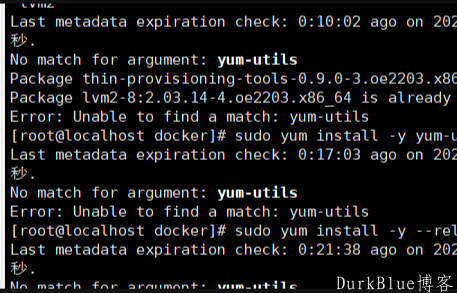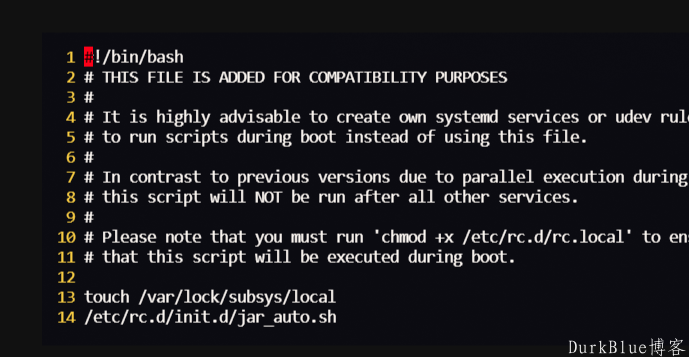 摘要: 经过上一篇的讲解,我们已经知道如何响应用户发送的文本消息了,对于与微信公众号的互动这块,就是你发个用户什么,需要用户响应给你什么,这里记住关键一点就是数据的传输都是通过XML,只要...
摘要: 经过上一篇的讲解,我们已经知道如何响应用户发送的文本消息了,对于与微信公众号的互动这块,就是你发个用户什么,需要用户响应给你什么,这里记住关键一点就是数据的传输都是通过XML,只要... 经过上一篇的讲解,我们已经知道如何响应用户发送的文本消息了,对于与微信公众号的互动这块,就是你发个用户什么,需要用户响应给你什么,这里记住关键一点就是数据的传输都是通过XML,只要正确解析微信请求中的XML数据包就能知道用户发送的是什么,然后只要你返回给微信服务器正确的XML数据,用户就能收到正确的响应。
接下来要说的是,如何调用官方技术文档中的API去获得数据,这里讲主要的两种方式,也就是Get请求和Post请求。
对于Get请求,我们已获取access_token为例,首先看官方技术文档
接口调用请求说明
1.https请求方式: GET
2.https://api.weixin.qq.com/cgi-bin/token?grant_type=client_credential&appid=APPID&secret=APPSECRET
参数说明
参数 是否必须 说明
grant_type 是 获取access_token填写client_credential
appid 是 第三方用户唯一凭证
secret 是 第三方用户唯一凭证密钥,即appsecret
返回说明
正常情况下,微信会返回下述JSON数据包给公众号:
1{"access_token":"ACCESS_TOKEN","expires_in":7200}
参数说明
参数说明
access_token获取到的凭证
expires_in凭证有效时间,单位:秒
那依据这个文档我们该如何在编码中通过get请求获取access_token 呢?首先需要获取到这个API接口,也就是这个URL
1.String token_url = "https://api.weixin.qq.com/cgi-bin/token?grant_type=client_credential&appid=APPID&secret=APPSECRET";
也就是一个字符串,现在这个字符串中可是缺少参数的,那么该怎么填充这些参数,这就牵涉都URL的拼接,那么该如何拼接呢?如下
1.String token_url = "https://api.weixin.qq.com/cgi-bin/token?grant_type=client_credential&appid=APPID&secret=APPSECRET";
2.String requestUrl = token_url.replace("APPID", appid).replace("APPSECRET", appsecret);
以上就是对URL的一个拼接。
那么该如何发起请求获得数据呢?比如这个获取access_token的请求,当你成功发起请求,返回的数据是json,这就必然牵涉到对json数据的解析,我们需要将json数据解析成我们能用的数据,这里一般解析成Java对象。
现在梳理一下,比如你编写代码发起一个get请求,然后成功得到返回的json数据,然后对json数据进行解析,得到我们想要的数据。
http请求工具类
现在有这么一个工具类
import java.io.BufferedReader;
import java.io.InputStream;
import java.io.InputStreamReader;
import java.io.OutputStream;
import java.net.ConnectException;
import java.net.URL;
import java.util.ArrayList;
import java.util.List;
import javax.net.ssl.HttpsURLConnection;
import javax.net.ssl.SSLContext;
import javax.net.ssl.SSLSocketFactory;
import javax.net.ssl.TrustManager;
import com.alibaba.fastjson.JSON;
import com.alibaba.fastjson.JSONArray;
import com.alibaba.fastjson.JSONException;
import com.alibaba.fastjson.JSONObject;
import com.ithuanqging.wechat.bean.ExistLabelInfo;
import com.ithuanqging.wechat.bean.NewLabel;
import com.ithuanqging.wechat.bean.Token;
import org.slf4j.Logger;
import org.slf4j.LoggerFactory;
/**
* 类名: HttpUtil </br>
* 描述: 通用工具类 </br>
*/
public class HttpUtil {
private static Logger log = LoggerFactory.getLogger(HttpUtil.class);
/**
* 发送https请求
*
* @param requestUrl 请求地址
* @param requestMethod 请求方式(GET、POST)
* @param outputStr 提交的数据
* @return JSONObject(通过JSONObject.get(key)的方式获取json对象的属性值)
*/
public static JSONObject httpsRequest(String requestUrl, String requestMethod, String outputStr) {
JSONObject jsonObject = null;
try {
// 创建SSLContext对象,并使用我们指定的信任管理器初始化
TrustManager[] tm = { new MyX509TrustManager() };
SSLContext sslContext = SSLContext.getInstance("SSL", "SunJSSE");
sslContext.init(null, tm, new java.security.SecureRandom());
// 从上述SSLContext对象中得到SSLSocketFactory对象
SSLSocketFactory ssf = sslContext.getSocketFactory();
URL url = new URL(requestUrl);
HttpsURLConnection conn = (HttpsURLConnection) url.openConnection();
conn.setSSLSocketFactory(ssf);
conn.setDoOutput(true);
conn.setDoInput(true);
conn.setUseCaches(false);
// 设置请求方式(GET/POST)
conn.setRequestMethod(requestMethod);
// 当outputStr不为null时向输出流写数据
if (null != outputStr) {
OutputStream outputStream = conn.getOutputStream();
// 注意编码格式
outputStream.write(outputStr.getBytes("UTF-8"));
outputStream.close();
}
// 从输入流读取返回内容
InputStream inputStream = conn.getInputStream();
InputStreamReader inputStreamReader = new InputStreamReader(inputStream, "utf-8");
BufferedReader bufferedReader = new BufferedReader(inputStreamReader);
String str = null;
StringBuffer buffer = new StringBuffer();
while ((str = bufferedReader.readLine()) != null) {
buffer.append(str);
}
// 释放资源
bufferedReader.close();
inputStreamReader.close();
inputStream.close();
inputStream = null;
conn.disconnect();
//jsonObject = JSONObject.fromObject(buffer.toString());
jsonObject = JSONObject.parseObject(buffer.toString());
} catch (ConnectException ce) {
log.error("连接超时:{}", ce);
} catch (Exception e) {
log.error("https请求异常:{}", e);
}
return jsonObject;
}
}
这个工具类可以发送http请求,包括get和post两种方式,你只要传入正确的URL还有请求方式,如果是post请求添加正确的json数据,这个json数据也就是你post请求提交的数据,然后这个工具类就会将请求返回的json数据封装成一个JSONObject对象,然后你就可以通过JSONObject.get(key)的方式获取json对象的属性值了。
比如这里的获取access_token
发起Get请求获取数据
/**
* 获取接口访问凭证
*
* @param appid 凭证
* @param appsecret 密钥
* @return
*/
public static Token getToken(String appid, String appsecret) {
// 凭证获取(GET)
String token_url = "https://api.weixin.qq.com/cgi-bin/token?grant_type=client_credential&appid=APPID&secret=APPSECRET";
Token token = null;
String requestUrl = token_url.replace("APPID", appid).replace("APPSECRET", appsecret);
// 发起GET请求获取凭证
JSONObject jsonObject = httpsRequest(requestUrl, "GET", null);
if (null != jsonObject) {
try {
token = new Token();
token.setAccessToken(jsonObject.getString("access_token"));
token.setExpiresIn(jsonObject.getInteger("expires_in"));
} catch (JSONException e) {
token = null;
// 获取token失败
log.error("获取token失败 errcode:{} errmsg:{}", jsonObject.getInteger("errcode"), jsonObject.getString("errmsg"));
}
}
return token;
}
这段代码不难理解,首先拼接正确的URL,然后请求方式是get,所以第三个参数不用填,因为没有要提交的数据,所以发起请求就是这样
JSONObject jsonObject = httpsRequest(requestUrl, "GET", null);
1
然后就返回给你一个JSONObject对象,就可以通过getkey的方式获取其中的属性值了。
发起Post请求获取数据
那么如果请求是Post的该怎样操作呢?相比于get请求就是在Post请求中需要添加提交的数据,而这个提交当然数据也是json数据,可以这样操作
/**
* 1、创建新的标签
* @param labelname 只能创建一次,也就是标签唯一
* @param token
* @return
*/
public static NewLabel creatNewLabel(String labelname, String token){
NewLabel newLabel = null;
// 拼接请求地址
String requestUrl = "https://api.weixin.qq.com/cgi-bin/tags/create?access_token=ACCESS_TOKEN";
requestUrl = requestUrl.replace("ACCESS_TOKEN", token);
//提交的json数据
String jsonData = "{\"tag\":{\"name\":\"%s\"}}";
JSONObject jsonObject = HttpUtil.httpsRequest(requestUrl, "POST", String.format(jsonData,labelname));
if (null != jsonObject){
newLabel = new NewLabel();
int id = jsonObject.getJSONObject("tag").getInteger("id");
String name = jsonObject.getJSONObject("tag").getString("name");
newLabel.setId(id);
newLabel.setLabelname(name);
}else if (0 != jsonObject.getInteger("errcode")){
System.out.println("创建菜单失败 errcode:{} errmsg:{}"+jsonObject.getInteger("errcode")+jsonObject.getString("errmsg"));
}
return newLabel;
}
这个以微信公众号创建标签为例
1.http请求方式:POST(请使用https协议)
2.https://api.weixin.qq.com/cgi-bin/tags/create?access_token=ACCESS_TOKEN
POST数据格式:JSON
POST数据示例:
1.{ "tag" : { "name" : "广东"//标签名 } }
参数说明
参数说明
access_token调用接口凭据
name 标签名(30个字符以内)
返回说明(正常时返回的json数据包示例)
1.{ "tag":{ "id":134,//标签id "name":"广东" } }
这里已经给出了提交json数据的示例,那么除了拼接正确的URL,因为是Post请求还要添加请求数据,就是这样发起请求了
//提交的json数据
1. String jsonData = "{\"tag\":{\"name\":\"%s\"}}";
2.JSONObject jsonObject = HttpUtil.httpsRequest(requestUrl, "POST", String.format(jsonData,labelname));
这里主要就是对提交的json数据做处理,工具类的第三个参数就是填写提交的json数据,只不过需要填写我们要提交的数据,比如这里的json数据是这样
//提交的json数据
1. String jsonData = "{\"tag\":{\"name\":\"%s\"}}";
其实这里的%s就可以直接换成我们想要创建的标签的名字,然后直接将jsonData作为第三个参数传入,只不过这里使用到了
1.String.format(jsonData,labelname)
相比你也知道这样处理的作用及目的,详细的用法可以搜索String.format的用法即可!
以上就是给你一个API接口,我们该怎么调用获取数据的说明了,当然,针对的数据格式是json,这在实际的开发中用到的非常多,所以一定要熟悉!
















